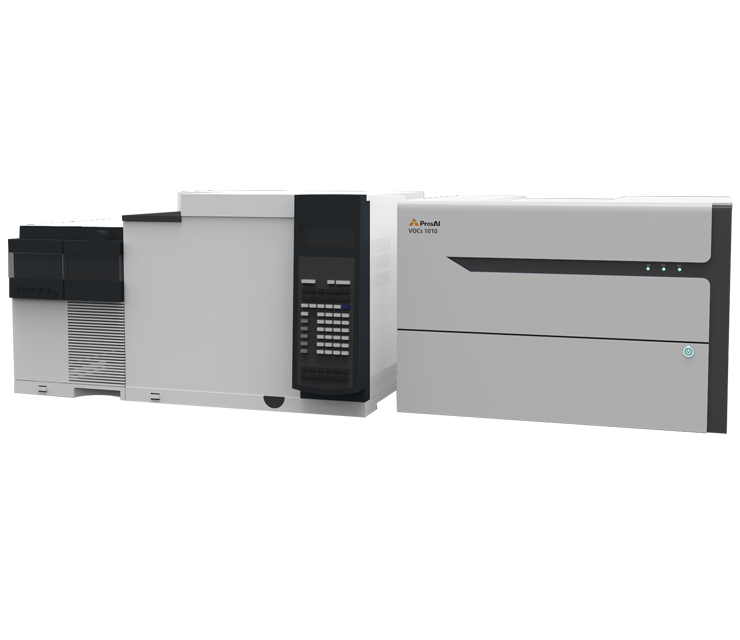
Product Presentation
In pre-concentrator, the target substance in ambient air of a given volume is enriched, purified and focused through low-temperature three-stage traps, which a given volume ambient air or standard gas .The ambient air or standard gas enters the pre-concentrator at a given flow rate & volume. After dehydration, capture and focusing in a low-temperature three-stage cold trap, After instant pyrolysis, the target substance is absorbed into the gas chromatography system for separation, and then detected by a hydrogen flame ionization detector (FID) Or mass spectrometry detector (MSD) for qualitative and quantitative analysis to obtain the concentration of volatile organic compounds. It is mainly used for the analysis of C1-C12 hydrocarbons, volatile halogenated hydrocarbons and oxygenated volatile organic compounds in the air, with a total of 116 + 1 components. It conforms to the technical requirements and test methods for continuous monitoring system of volatile organic compounds in ambient air by gas chromatography.
Product Features
A set of three-stage electronic refrigeration cold trap (dehydration, trapping and focusing) flow path system for sample pre-concentration, using heart-cutting for component cutting, C2~C3 components are detected by FID, and the remaining components are detected by MS . The system is equipped with silanization dynamic dilution, fully automatic control and quality assurance. Adopting the full flow path silanization inertness and the whole process no cold spot insulation technology, the system has good linearity, low detection limit and high precision accuracy. Product performance indicators are better than the requirements of "Technical Requirements and Detection Methods of Ambient Air Volatile Organic Compounds Gas Chromatography Continuous Monitoring System" (HJ 1010-2018) .
Application Fields
It is mainly used to automatically monitor the C2~C12 hydrocarbons, volatile halogenated hydrocarbons, and oxygen-containing volatile organic compounds in the ambient air and the atmosphere in polluted areas, with a total of 116+1 components. The typical standard spectrum is as follows:






